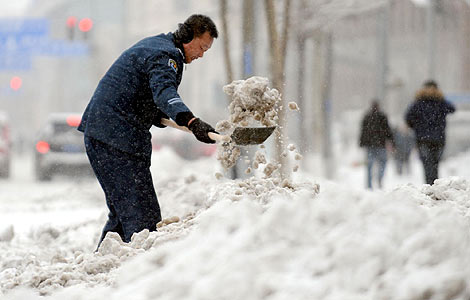
Beijing will limit car usage based on license plates a long-term policy in order to reduce the number of vehicles on the roads and address air pollution, the government said.
In 2011, the capital began to limit car usage through a system based on license plate numbers that keeps one-fifth of potential vehicles from being used downtown on weekdays.
According to an announcement released by the municipal government of Beijing on Tuesday, the city has set a target of a year-on-year decrease of 2 percent in the density of major pollutants this year.
The prolonged application of the limit of car usage is a means to help achieve the goal, according to the announcement.
Liu Xiaoming, director general of Beijing Municipal Commission of Transport, said in a radio program on Wednesday that the city will continue efforts to limit car usage and develop a public transportation system to tackle traffic gridlock.
Beijing announced a package of measures to tackle worsening traffic congestion at the end of 2010. The measures include sharp limits on new vehicle registrations, limiting car usage, increasing parking fees and improving public transportation.
Only 174,000 new cars were registered last year, the slowest increase since 2000, said Liu.
As of the end of March, the capital had 5.04 million vehicles, compared with 4.81 million at the end of 2010.
Thanks to those measures, the average Traffic Performance Index in downtown Beijing has dropped from 2010's 6.1 to 4.8 last year, he said.
The index gauges traffic congestion. Between 0 and 2 is smooth traffic flow, 4 to 6 is lightly congested, 6 to 8 is moderately congested and 8 to 10 is severe.
The public transportation system handled 42 percent of the daily transport volume in Beijingat the end of last year. The proportion of private car use experienced its first decline, standing at 33 percent, a 1.2 percentage point decrease from 2010’s figure, said Liu.







